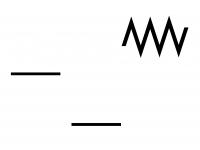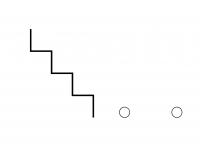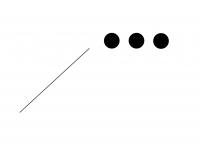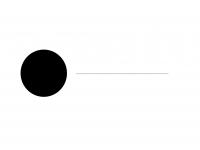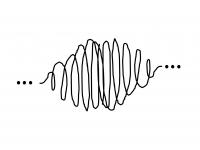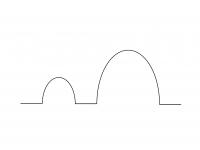Graphic scores Composing at Home (Children) >
In this activity you will create your own graphic scores inspired by composers such as Cornelius Cardew, Cathy Berberian and John Cage.
Graphic Scores
Many composers from the 20th and 21st Century used graphic scores instead of traditional music notation to describe and record their musical ideas. A graphic score uses uses images, shapes and pictures instead of notes. Composers use graphic scores because they allow them to express musical ideas that could not be described by traditional notation. Many of them are very beautiful.
Here is one of the most famous - Treatise by Cornelius Cardew - which has been recorded and filmed so that you can see the score at the same time as hearing the music. As you listen, think about how the musicians are interpreting the images. You could turn the sound down and interpret the images musically yourself!
Stripsody, for solo voice, by Cathy Berberian uses cartoon pictures to indicate what sounds should be made:
There are many other graphic score examples to be found on the internet by composers such as John Cage, Iannis Xenakis, R. Murray Schafer. Have a look to get inspired!
Your Turn!
Below are some musical ideas expressed in images. See the bottom of the page for the IMAGES or click HERE to download them as a PDF with all the shapes on one page, which you could cut out and use.




Find a musical instrument, a collection of musical instruments, a collection of objects that make sounds, a music app or use your voice to create music for each of these images. As you do this, think about how high, low, long, short, spiky, smooth, loud or quiet the sounds might be. Then, you could:
- Put the different ideas in a order that you like - you can use each idea more than once.
- Play around with the ideas - stretch and squash them, make fast and slow versions, turn them upside down, play them backwards. Then try number 1.
- Make 6 images of your own and try 1. and 2. Again, when you are creating your images, think about how you can show that sounds are high, low, loud, quiet, long, short or chaotic, calm, jumpy, angry, bouncing, sparkling etc.
Please send any music or images you create to learning@bcmg.org.uk
For a PRINTABLE version of the resource CLICK HERE




